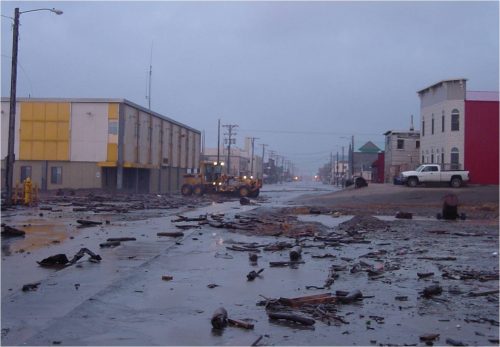Study Authors Put Historic Wind Data on Web

In an effort to understand past and future winds in Alaska, programmer Kyle Redilla,
of UAF’s International Arctic Research Center, and Sarah Pearl, an undergraduate from
Dartmouth College, analyzed over 30 years of data from 67 airports across the state.
They used the observations, along with simulations by two global climate models, to
predict future changes in wind.
The study predicted that by 2099, winds along Alaska’s northwestern coasts will grow
stronger.
According to the research, wind changes are expected at many locations across Alaska. In general, wind speeds are projected to increase in winter and decrease in summer. However, the most startling result is the increase in high-wind events along the northwestern coasts.
To make this research as useful as possible, the team produced a web-based tool allowing anyone to view and download the historic (1980–2014) wind data for Alaska. The tool is being expanded to include projected future changes in high-wind events.
Debris lies on a street in Nome, Alaska, after it was inundated by storm flooding. New research suggests that high-wind events in Nome could triple by 2099. Photo by Dave Atkinson, courtesy of UAF International Arctic Research Center.


